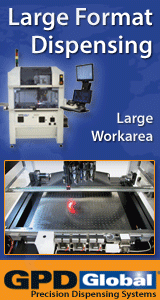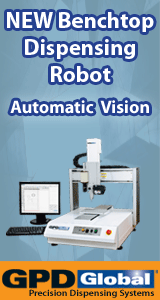IPC-TM-650 Method 2.6.28 (Proposal) Water Absorption Bulk Content and/or Water Absorption Rate, Printed Boards 1 Scope Moisture absorption can cause delamination or other damage in printed boards subjected to soldering heat. This test is a process control tool to determine both the bulk moisture content and moisture absorption rate of a printed board. It may be used to determine whether the specimen conforms to the monitoring level of the user’s performance specification, to assist in process development, or for process control. This test may not provide accurate analytical results on all specimens, depending on the thickness of the item, the presence of copper layers or other moisture barriers within the structure, or the presence of any volatile compounds other than water. The weight of the specimen is compared before and after a bake operation. The bake is intended to remove most of the water (>90%) from the sample, and the bake time and temperature specified herein are minimums. To improve test accuracy, or to prevent heat damage, other bake parameters may be AABUS. 2 Applicable Documents IPC-QL-653 Certification of Facilities that Inspect/Test Printed Boards, Components and Materials 3 Test Specimens This test may be applied to actual printed boards. If the item is too large to be weighed easily, a representative sample or coupon may be used. The sample may be sectioned from a larger printed board or assembly (e.g. a scrapped item), provided that the sample represents the features and construction of the whole. If a coupon is used, it must include features and construction similar to the item that it represents, including similar content and distribution of copper, and must have been subjected to the identical processing environments and conditions. It should be realized that the use of a representative coupon excised from a larger printed board may result in exposed laminate edges that will result in a slightly different absorption rate than the actual printed board. See 6.1 and 6.2 for guidance on sample selection. 4 Apparatus 4.1 Circulating air oven capable of maintaining a uniform temperature of 105 +5 °C/-0 °C (221 +9 °F/-0 °F). Nitrogen atmosphere (inert) or vacuum is not required, but will promote drying and improve accuracy of the test. 4.2 Analytical balance capable of determining the test sample/coupon weight to 4 places of accuracy (X.XXXX) is required. Precautions shall be taken to insure that the analytical balance test location is not compromised by vibration or air drafts. The analytical balance shall be located on a grounded ESD surface during testing. The analytical balance shall be calibrated in accordance with IPC-QL-653. 4.3 Tweezers shall be used to handle the test sample/coupons to prevent handling contamination. The tweezers shall be cleaned prior to each test sample/coupon weighing session. 4.4 Gloves shall be used when handling the test samples/coupons to prevent handling contamination. The gloves shall not contribute any contamination material on the test samples/coupons. 5 Procedure 5.1 Initial Weighing The weight of the test sample/coupon shall be determined to the nearest 0.0001gram and recorded. 5.2 Bake The test sample/coupon shall be baked for 24 hours at 105 +5 °C/-0 °C (221 + 9 °F/-0 °F). 5.3 Post-Bake Weighing An extremely rigid post bake weighing regimen must be strictly followed to accurately determine the test sample/coupon absorption rate. The analytical balance measurement station shall be organized to prevent any interruption of the post bake weighing process. Procedure: 1. The test sample/coupon shall be removed from the circulating oven and transferred immediately (within 2 minutes) to the analytical balance measurement location. 2. Each test sample/coupon shall be placed on the analytical balance and allowed to dwell for 15 seconds, and then the sample/coupon weight shall be recorded to the nearest 0.0001 gram. Note that the sample/coupon weight will not settle completely. These measurements characterize the bulk moisture content of the test samples. If the moisture absorption rate is desired, continue with process steps 3 thru 5. 3. After recording all test sample/coupon weight measurements, measure and record the temperature and relative humidity at the analytical balance measurement station. 4. The test sample/coupons shall remain at the analytical balance measurement station for 15 minutes +1/-0 minutes and procedure steps 1-3 shall be repeated. 5. The test sample/coupon weighing procedure shall be conducted for a period of 4 hours. 5.4 Calculations Calculate the bulk moisture content using the following equation: Moisture Content = Initial Weight - Post-Bake Weight Post-Bake Weight Calculate the moisture absorption rate by plotting the bulk moisture content versus time using the data recorded in Procedure steps 3 thru 5 of 5.3. NOTE: Metals do not absorb moisture, and metal content in the specimen will affect the accuracy of this determination. If copper or other metals are likely to exceed 20% of the weight of the specimen, this weight should be determined or estimated, and subtracted from both the Initial Weight and the Post- Bake Weight in the formula above. This correction factor shall be AABUS. 5.5 Report Report the Bulk Moisture Content or Moisture Absorption Rate for the sample/coupon. 6 NOTES 6.1 Test Coupons 6.2 Production Printed Boards Material in this Test Methods Manual was voluntarily established by Technical Committees of the IPC. This material is advisory only and its use or adaptation is entirely voluntary. IPC disclaims all liability of any kind as to the use, application, or adaptation of this material. Users are also wholly responsible for protecting themselves against all claims or liabilities for patent infringement. Equipment referenced is for the convenience of the user and does not imply endorsement by the IPC
reply »
![]() Hello,
Do you know a method for measure the humidity of P...
- Apr 13, 2010
by
Patrick
Hello,
Do you know a method for measure the humidity of P...
- Apr 13, 2010
by
Patrick
![]()
![]()
![]() IPC-TM-650 Method 2.6.28 (Proposal)
Water Absorption Bulk C...
- Apr 13, 2010
by
davef
IPC-TM-650 Method 2.6.28 (Proposal)
Water Absorption Bulk C...
- Apr 13, 2010
by
davef
![]()







